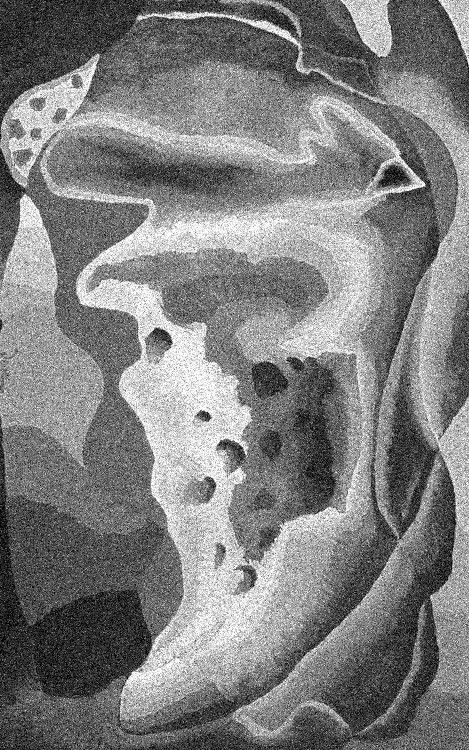What is Limbic Capitalism?
An interview with historian David Courtwright on his new book, The Age of Addiction.

As late as the 80s, the term addict bore such stigma that prosecutors in cigarette-related cases were unable to convince juries that smokers were actually addicted to cigarettes. Today, everyone seems to be an addict: there are still drug addicts, of course, but there are also gambling addicts, sex addicts, internet addicts, food addicts. It seems many forms of human behavior can now be addictive.
In The Age of Addiction, the historian David Courtwright traces the victory of what he calls “pro-vice activism” over “anti-vice activism,” and the genesis of limbic capitalism. In his words, “Limbic capitalism refers to a technologically advanced but socially regressive business system in which global industries, often with the help of complicit governments and criminal organizations, encourage excessive consumption and addiction” (6). The following interview explores the philosophical and historical nuances of this term.
Damage Magazine
The discourse of behavioral addiction is pretty popular these days: everyone hears about gambling addiction, food addiction, sex addiction, internet addiction. But I think most people see these kinds of things as like drug addiction, not the same thing as drug addiction. Is this more than an analogy?
David Courtwright
Well, it’s sort of like overlapping Venn diagrams: they are alike, and then they aren’t. We know through imaging studies and other scientific research that there are common neural mechanisms involved in compulsive overeating, drug addiction, gambling addiction, and so on. We also know that certain drugs like naltrexone, a narcotic antagonist, seems to work for treating both drug and behavioral addictions, like gambling and food, which suggests that there is a neural common denominator.
So it’s not just an analogy. People who are prone to one form of addiction seem to be prone to others. There’s a genetic component, and there’s also early life circumstances: traumatic childhood experiences make people more likely to become addicts. In their adult lives, addictions may differ depending on what people are exposed to, what kind of culture they grow up in, etc.
But these things are also obviously different. Some addictive behaviors have the potential to kill you fast, and others accumulate their harms more slowly. They may ultimately be lethal, but if you are a compulsive gambler or overeater, you’re not going to die right away. If, by contrast, you’re an opiate addict who goes into treatment, comes out, relapses, and starts using again, you may keel over and die that day.
A reviewer of Age of Addiction pointed out that there are opt-in and opt-out addictions. If you take something like heroin addiction, you’re not born with a syringe in your arm. That’s a behavior that you have to acquire; that’s an “opt-in” addiction. But in other cases, in order to bring an addiction under control, you have to opt out of something. The classic example is food. If you develop a behavioral disorder around food, you still have to eat. And that makes it a lot trickier. There’s been a lot of research on how people quit heroin on their own. And if you look into that research, the former user will say, “Well, you know, I left the old neighborhood. I got away from the friends who would remind me of drug use, or I got away from the neighborhoods that reminded me of getting high.” How can you do that with something like food? You’re constantly bombarded with images of hyper-palatable food, you have to eat virtually every day, etc.
This point obviously extends to digital technologies. It is very hard to lead a normal social or professional life without access to digital technologies.
DM
The discourse of behavioral addictions appeared in the 1980s, but the range of behaviors covered under this idea—gambling, sex, etc.—have always existed. And no doubt people often thought of them as habitual, unhealthy, etc., but it was really only in the 80s that people began to be willing to call them addictive. Why is that?
DC
Well, first, there are some genuinely new technologies—the digital ones, in particular—that have created new opportunities for excessive consumption. Second, as for the other things like overeating or gambling, they’ve always been around, but there’s been a kind of intensification. The 1980s were definitely a turning point. That’s when Las Vegas starts to digitize machine gambling. The modern resort casino was in place by the late 60s, but if you went to one in 1969, you’re still pulling a lever on a mechanical machine. In the 80s and 90s, you have this transition to much more efficient and much more seductive digital video poker or slot machine games. You walk into a casino now, and you see somebody whose hands are literally flying over the screens, playing a hand of video poker in a few seconds, and then it’s on to the next hand. So it’s old vices in new bottles.
DM
You call the political-economic system that encourages addiction limbic capitalism. Could you explain what this is, and how it is different from just plain capitalism?
DC
Economists make a distinction between durable and non-durable goods. Limbic capitalism is mostly about problematic, non-durable goods. You smoke a cigarette, and it’s gone. You go to Las Vegas and drop $10,000. Limbic capitalist enterprises, whether they are licit or illicit, whether they’re supported by the government or not, are predicated on providing goods and services that produce quick hits of brain reward. And those brain-rewarding products operate on and through your limbic system, a very ancient part of your brain that deals with pleasure, motivation, and long term memory.
Limbic capitalism is enormously profitable, but it’s socially regressive. If you look at virtually any limbic capitalist enterprise, the vast majority of their revenues come from 10-20% of their customers, the heaviest customers, and especially the addicted customers. The other disturbing piece here is that they target the young. They want lifetime heavy consumers. If a person has reached the age of 25, the chance they’re going to start smoking cigarettes is very, very low. Bad habits typically form early in life, and limbic capitalist entrepreneurs know that.
There’s a chapter in the book on anti-vice activism, a transnational movement in the late 19th and early 20th century for the regulation or prohibition of certain commercial activities. They saw vice and addiction as threatening not only to the individual, but also to the security of the state. The Russo-Japanese war in the early 20th century was instructive to many observers. The Russian soldiers and sailors drank very heavily, whereas the Japanese soldiers who defeated them were quite sober. People would point to that, and say, “Well, you can’t have a nation of drunks! You get your rear end handed to you by a numerically inferior enemy, even if you’re big bad Russia.”
But in the 30s and 40s, the empire of vice struck back, of course.
DM
You say that limbic capitalism is socially regressive, but what would you say to the counterargument, “Sure, addiction isn’t great, but limbic capitalism has delivered us all sorts of pleasures right at our fingertips!”
DC
Chapter 3 of the book is called “Liberating-Enslaving Pleasures.” I frankly acknowledge that there’s much joy to be had in these pastimes and products. A glass of good wine with a meal, occasionally experimenting with drugs, playing a few games on the Internet—that can all be fun, a nice break, liberating in many ways.
But the problem with limbic capitalism is that you can’t make any serious money if people only occasionally do these things. We’re in an economy that’s increasingly predicated on attention and surveillance. The logic of the system is to push consumers toward heavy consumption and, at the extreme of that spectrum, you get compulsive, harmful consumption. And that’s what the problem is: to make sustained profits, to keep your shareholders happy, you have to push in that direction.
DM
To come at the problem from the other side now: even in those instances when the pleasures of limbic capitalism are occasionally enjoyed, when it doesn’t become addictive, isn’t there also something insidious there? Limbic capitalism treats human beings as pleasure-seeking creatures in a kind of flat and reductive way. It has no appreciation for the pleasures of studying history or being in a long-term relationship. Limbic capitalism just targets us inasmuch as we’re dopamine circuits.
DC
Limbic capitalists treat us statistically. In Chapter 8, I give the example of alcohol companies and Brazilian college sports clubs. Booze companies will provide cheap alcohol to clubs to throw parties. Whatever the brand of the liquor is, it will be prominently displayed. They’re essentially trying to build brand loyalty at an early age. They don’t expect that every person who goes to one of these industry-subsidized parties is going to become a heavy drinker, of course, and in fact, they probably don’t even want that because, if it got too far out of hand, there might be a strong political reaction. But they expect that some percentage will become brand loyalists, as it were, and that that percentage will be large enough to give them a decent return on their investment.
We are not individuals to them; they are not targeting particular people. Now, having just said that, the world of digital addictions may be a different story. The information they have available may be so sophisticated that now they’re actually targeting individuals but anyway, it’s still all designed to get numbers.
DM
Historians typically differentiate the present, neoliberal period (1972-on) from the post-war or Fordist period (1945-1972) in a variety of ways (deindustrialization, the growth of the power of finance, the transformation of the associational landscape, academic postmodernism and cultural conservatism, etc.), but you see limbic capitalism as spanning both periods. How has limbic capitalism been a point of continuity between these two periods? Are we better off emphasizing the continuity rather than the divide between the two?
DC
In terms of limbic capitalism, there’s a lot of continuity. I see the great disruption occurring in the period from the last third of the 19th century through the first third of the 20th century. That’s the period when the anti-vice activists fight back. We get international drug control treaties, prohibition statutes, laws against gambling, laws against prostitution. This is the high water mark of the capital P Progressive campaign against commercial vice. These anti-vice activists were progressive in the sense that they believed that untrammeled markets should not rule over individuals or despoil societies.
But then you get a reaction, a period I refer to in the book as pro-vice activism, which begins in the 30s and remains triumphant today. Some people might make the argument that deindustrialization, beginning in the 1970s, set people up for certain addictions by making their lives harder or without purpose. But limbic capitalism does well with both a thriving and a demoralized working class. If you look at per capita consumption of alcohol, cigarettes, and licit drugs, all those things increased after World War II in the late 40s, 50s, 60s—the golden age of the American worker. So the addiction industry is not just about the defeat of the working class. There are people out there working full-time to make sure consumers, regardless of their class or morale, have their eyes glued to the screen and are buying six packs.
DM
But surely there’s some important distinction to be made here. In the postwar period, working people could earn a family-sustaining wage, they could buy a house, a car. Today they don’t have the same kinds of jobs or social protections. What it means to pursue vice has to differ in these two situations.
DC
There are a lot of factors at play here. I would emphasize the technological aspect. Today we’ve got stronger drugs, richer food, newer technologies. With the proliferation of potentially addictive behaviors and substances, the cumulative load on working-class people becomes greater. Today there’s also more poly-substance use.
And the social connotations around certain drugs have certainly changed with the culture. Once somebody smoking a cigarette at a card game with his buddies was just doing normal guy stuff. Now smokers are huddling outdoors, shivering in the cold, and they’re seen as losers.
DM
The obvious targets of a critique of limbic capitalism include Big Pharma, fast food chains, casinos, and the like. But you say that “suckerfish ride the sharks of limbic capitalism” (235), and the suckerfish are almost as important as the sharks. What do you mean by this?
DC
I’m fascinated by what I call “problem profits.” There’s lots of money to be made in the form of secondary and tertiary profits from addictions. A good example would be the fast food industry: some people do develop compulsive eating disorders that are centered on fast food, and that means more business for people who treat diabetes, for surgeons who perform bariatric surgery to restrict the intake of food. Those surgeons even have their own journal at this point, which means even the editor of that journal benefits.
If you look at all of the problems that are generated by limbic capitalism, you see that there’s a lot of money to be made by cleaning up the problems of drugs and other potentially addictive products that are practically radioactive with externalities. While these externalities may generate a cost to the individual, they also will generate profit or an opportunity for profit for somebody else. These are the suckerfish that ride the shark of limbic capitalism.
Now I don’t mean to suggest that there’s some kind of conspiracy between McDonald’s and the bariatric surgeons. I mean that when you create a problem, somebody’s going to come along and devise solutions to try to ameliorate the problem. Vaping is one very profitable solution to the problem of cigarettes. Public health people love it, until Juul starts using social media influencers to target people in their mid-teens and turns them into lifelong consumers. Sometimes suckerfish can turn into sharks.
DM
I’m curious about the meaning of limbic capitalism for politics today. You say in the book that “we did not have to wait for the last king to be strangled with the entrails of the last priest” (75). How does limbic capitalism make us emotionally free and satisfied in a way that distracts from or obscures political reality?
DC
It’s useful to distinguish between pleasure-giving products and discoveries and the way in which limbic capitalism exploits them. Take the example of playing cards, which were invented in East Asia and came through commerce to Western Europe, where people made up all kinds of card games for distraction and pleasure. But this simple technology offered a pillar for the gambling industry that emerged in early Modern Europe, which in turn morphs into this super-sophisticated, international world of casino resorts.
Pleasure-giving products can be liberating, and the simple fact of the human condition is that we need all the reprieve we can get. Most human beings throughout history have led pretty miserable lives, and these discoveries provided respite for people, but also of course the opportunity to exploit them. This is the tension at the heart of the book.
But do these pleasures distract us from hard political realities? Yes and no. Plenty of young people are lost in a world of computer games and social media, but, on the other hand, plenty of them pay attention to politics 24-7 on social media. It’s a sword that cuts both ways. But your instinct is right that there is a kind of “opiate of the masses” quality to digital technologies and other potential addictions.
■
David T. Courtwright, Presidential Professor Emeritus at the University of North Florida, is the author of The Age of Addiction, How Bad Habits Became Big Business; Forces of Habit: Drugs and the Making of the Modern World; Addicts Who Survived: An Oral History of Narcotic Addiction before 1945; and Dark Paradise: A History of Opiate Addiction in America. He lives with his wife, Shelby Miller, in Jacksonville, Florida.



